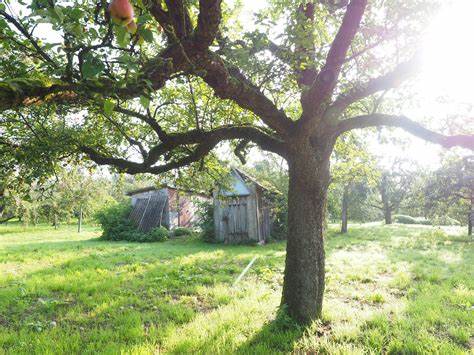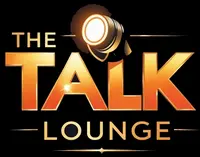Virginia City Erupts After Viral Video of White Man Taunting Black Man About “Hanging Tree” (WATCH)

Virginia City, VA – Over the weekend, Dayone Johnson is seen in a shocking video that surfaced online has thrown Virginia City into a storm of outrage and condemnation. The footage captures a deeply unsettling interaction where a white man taunts a black man about a “hanging tree,” a term painfully rooted in the history of lynchings in America. The incident has sparked widespread indignation and calls for justice, drawing national attention to the small city.
The Incident
The viral video shows a white man making racially charged comments, referencing a tree as a place where black people were historically hanged. Dayone Johnson, visibly distraught, confronts the white man, who continues his taunts without remorse. The video quickly spread across social media platforms, amassing millions of views and igniting a fierce backlash. https://www.instagram.com/reel/C-MWo7BxFZ1/?utm_source=ig_web_copy_link
Public Outrage
The reaction was swift and intense. Social media erupted with condemnations of the white man’s behavior, calling it a blatant display of racism and insensitivity. Civil rights activists and community leaders voiced their anger, demanding accountability and justice. Hashtags like #JusticeForBlackMan and #EndRacismNow trended as people from all over the country expressed their solidarity with the victim and their outrage at the incident.
City and Sheriff’s Office Response
In an attempt to quell the growing unrest, the Virginia City Sheriff’s Office released a statement denouncing the actions depicted in the video. Sheriff John Doe stated:
“The behavior displayed in this video is reprehensible and goes against the values of our community. We are committed to conducting a thorough investigation and ensuring that justice is served. Racism and hate have no place in Virginia City.”
Mayor Jane Smith also addressed the incident, emphasizing the city’s zero-tolerance policy towards racism. She announced a series of community forums aimed at fostering dialogue and understanding, in hopes of preventing such incidents in the future.
Calls for Justice
Civil rights organizations are not only demanding an immediate and thorough investigation but also pushing for legal action against the white man involved. Community leaders are urging the city to implement more rigorous anti-racism education programs and to hold public officials accountable for ensuring a safe and inclusive environment for all residents.
Historical Context and Broader Implications
This incident is a painful reminder of the deep-rooted racial tensions that persist in American society. The reference to a “hanging tree” evokes the brutal history of lynching and racial violence that African Americans have endured. It underscores the need for continued efforts to confront and dismantle systemic racism.
The community’s response has been one of unity and determination. Vigils, rallies, and peaceful protests have been organized, drawing attention to the need for change and the importance of standing together against hate.
Moving Forward
As the investigation proceeds, Virginia City is at a crossroads. The incident has highlighted the urgent need for systemic change and the importance of fostering a community that values and respects all its members. The hope is that this tragedy will serve as a catalyst for meaningful dialogue and concrete actions towards a more just and inclusive society.
The incident in Virginia City has not only sparked outrage but also galvanized a community and a nation to confront the realities of racism. As the investigation unfolds, the call for justice and unity remains strong, echoing the voices of those who demand a future free from hate and discrimination.
Stay tuned for further updates on this developing story as Virginia City navigates the aftermath of this deeply disturbing event at The Talk Lounge.
https://www.instagram.com/p/C-MWo7BxFZ1
The Evolution of Feminist Westerns
This study examines the development of feminist Westerns in film and television, showing how they challenged the sexism of their era while keeping pace with changes in American political, social, and cultural life. It uses rhetorical analysis of Westerns to demonstrate how these works actively promoted women’s liberation from the restrictions imposed by prevailing cultural norms. The study also reviews the influential works of Joan Cavelty and Jane Tompkins, showing that Westerns, contrary to the idea that they inherently supported anti-feminist ideologies in the late 19th and early 20th centuries, consistently portrayed feminist perspectives.
Case Study: Grizzly Encounter
A.F., a 29-year-old from Frances Beach, was on a solo day hike on Turbid Creek, north of Turbid Lake, when he saw an elk running toward him. A short time later, he heard a rustling sound about 10 yards away. He saw a bear, which he believed to be a female grizzly with cubs, attacking him. The bear inflicted multiple puncture wounds on his upper and lower left legs, severed his upper left arm, dislocated his left shoulder, and punctured his lower left back when A.F. ran to protect himself.
The bear soon moved away, and A.F. began walking up the road, where he was taken to Lake Hospital. Medical personnel treated him, kept him overnight for observation, and made plans for his release later that day. Officials closed the area around Pelican Valley and Turbid Lake to all hiking until further notice, while allowing stock parties to pass through. They also temporarily closed the Indian Creek Campground after repeated bear sightings to protect both humans and animals and to prevent further incidents.
Women’s Agency in the West
This book challenges the prevailing view that Westerns are inherently anti-feminist. By highlighting the portrayal of female professionals, it shows that female characters in both cinematic and television often seek agency and empowerment in both the private and public spheres, even though culture traditionally limits the private to femininity and the public to masculinity. This study explores the connection between these progressive portrayals and the explicit and implicit feminist ideologies that have permeated Western countries in every era, from the 1930s to the 21st century.



.jpg)